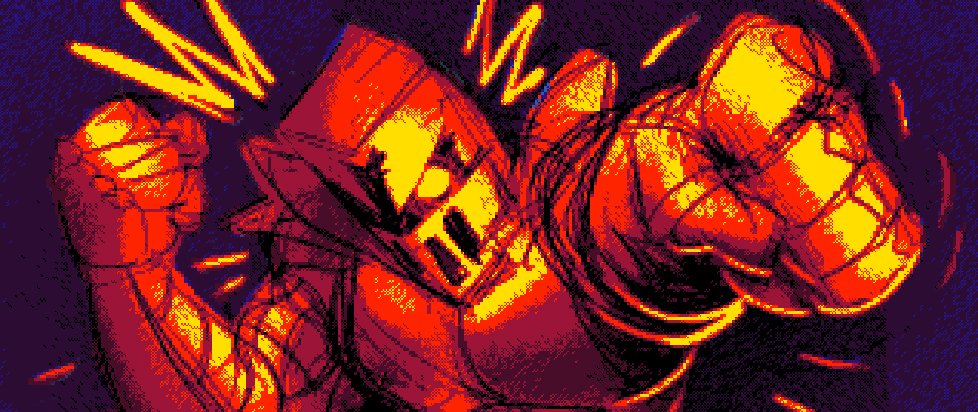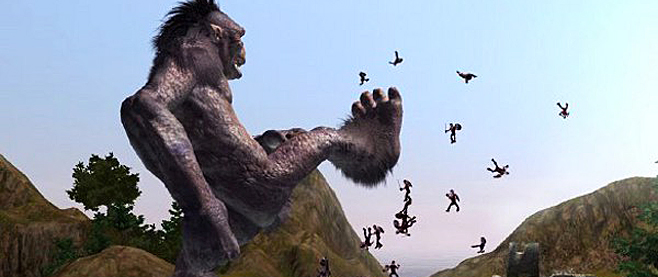
Fight Knight Embraces Repetition
Repetition is boring, but it helps us immensely when we are trying to hone a new skill, like mastering a musical instrument or bracing your stomach for an inhumane amount of food at a competitive eating contest. This means devoting hours into your craft through slow, steady repetition. However, pushing ourselves to do so takes extraordinary discipline. Whether you are starting on your arpeggios for the umpteenth time or are becoming breathless from binging on too many water-soaked hot dogs, it’s tempting to give in to inertia and crankiness. Repetition is mostly just that: boring, tiring and not very fun at all.
Which is why the relationship videogames have with repetition is so fascinating. One concept most videogame players will be familiar with is grinding, which is the repetitive and sometimes wearisome concept of doing the same menial task over and over again. If your character in a videogame – typically a roleplaying game or an MMO – is too weak to advance to the next level, it can gain strength and experience points by engaging in battles for hours on end. That’s when your character level increases, your stats are boosted and you slowly but surely become impossibly powerful. Is it enjoyable? Most of the time it’s nothing more than just an exercise in tedium, but grinding taps into our innate need to seek rewards for our hard work – accompanied by a copious amount of lights, visual and sound effects to make battles feel more visceral. Sure, it can be monotonous, but it’s all worth it when your hero can boast about holding a two-handed great sword in one hand, a Buster Sword in the other, and cranking a cross-bow with their mouth.
Like many games, the indie brawler Fight Knight also embraces repetition, while demanding that you fight with vigor. Shunning all conventional arms except for . . . his own arms and limbs, the eponymous Fight Knight pummels the bones out of a tower of skeletons, lizard folks, necromancers and all manner of fantastical enemies. Dodging and ducking attacks soon become second nature as you quickly learn that agility, instead of brute force, is what keeps you alive throughout the arduous journey. However, the crucial difference is that such lessons are not explicitly taught, but picked up through grinding and endless battles of trial and error. The Fight Knight himself doesn’t get better at fighting, nor do his punches end up doing more damage the more time you invest in the game.

But the player learns and gets better.
Learning the flow of battle doesn’t come easy. Fight Knight can – and trust me, it will happen – toss three armored skeletons and two lizard wizards your way and it’s up to you to figure out how to avoid the skeletons’ melee attacks while artfully prancing around the fireballs cast by the wizards. Doing so can be agonizing initially and it doesn’t help that dying in these matches means losing the precious progress you have made thus far. But when you do figure it out, combat become massively satisfying. In addition, special attacks, such unleashing a flurry of rapid-fire punches, are cleverly disguised in the form of mini games. In a way, it’s similar to music-themed rhythm games like Guitar Hero, which challenges your sense of rhythm.
Yet, Fight Knight’s creativity starts to wane when it comes to the level design; for all the vastness of the various zones, the walls and tiles look indistinguishable from one another, and my eyes are constantly glued to the mini map instead of what’s ahead of me. In this case, the repetitive design doesn’t seem to serve much of a purpose other than to confound the player.
Like repetitive practice in real life, Fight Knight’s adaptation of repetition and grinding nudges the responsibility of leveling up to the player. But luckily for us, the process doesn’t get quite as mundane. Try the demo yourself, and support the developers on Kickstarter to help them fund a full version of the game if this is a brawler that is right up your alley.





